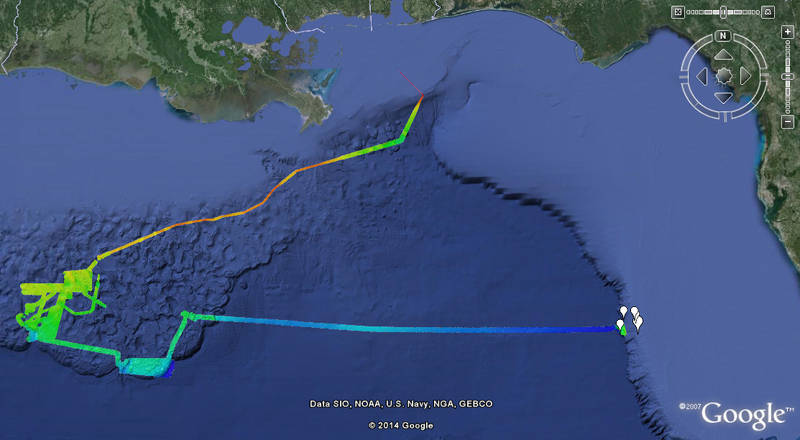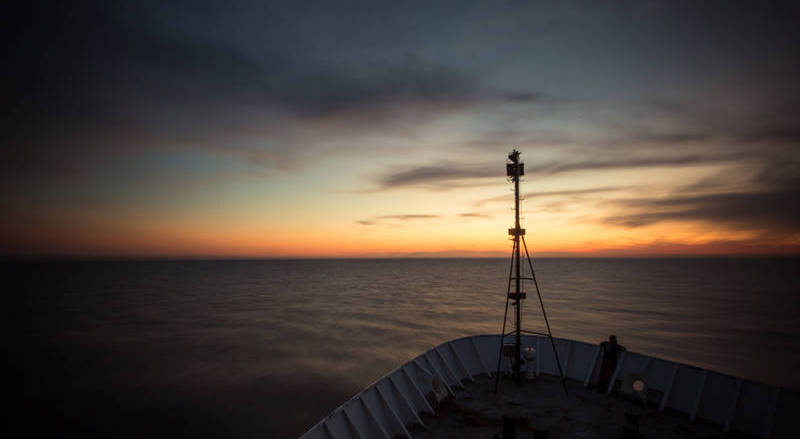
Always Exploring-everywhere NOAA Ship Okeanos Explorer goes she collects high resolution sonar data. Here you can see the multibeam bathymetry data that has been collected so far during the third leg of the 2014 Gulf of Mexico Expedition. Our next set of dives will occur on the West Florida Escarpment (shown here in white dots). We found a lot of interesting things in the Northwestern Gulf, stay tuned to see what we find next! Image courtesy of NOAA Okeanos Explorer Program, Gulf of Mexico 2014 Expedition. Download larger version (jpg, 393 KB).
